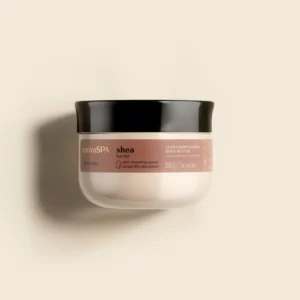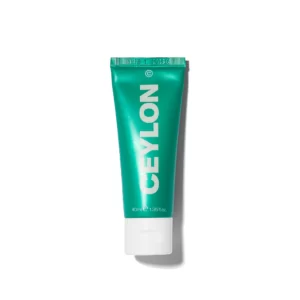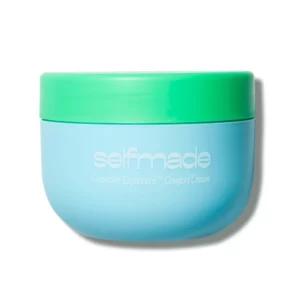No products in the cart.: $0.00
8 Natural Remedies for Eczema on Breast

Are you suffering from eczema on breast? Breast eczema can be uncomfortable and, depending on the degree of severity, it can even be painful. It can also make people self-conscious of their appearance and can have a negative effect on relationships. In this post, we’ll share natural remedies, soothing clothing, and simple lifestyle changes that can help you heal eczema on breast.
Symptoms of Eczema on Breast
Like all types of eczema, breast eczema is characterized by redness, dryness, and scaling or cracked skin. There will also be itchiness – particularly on the nipple. Small bumps that may crack or ooze fluid may appear, particularly if there is repeated scratching. Scratching can also lead to swollen or overly-sensitive skin. Symptoms will likely occur under or in between your breasts, as well as on the rest of your chest area. Bear in mind that everyone is different and symptoms may vary from person to person.
When it comes to treating breast eczema, it’s highly important to seek medical attention to clarify it’s not another serious condition like Paget’s disease. This is a rare form of cancer associated with breast cancer that causes eczema-like changes to the skin of the nipple.

Topical remedies
1. Aloe vera gel
Aloe vera gel comes from the leaves of the aloe plant. People have used aloe vera gel for centuries to treat a wide range of ailments, including to soothe eczema.
A 2017 systematic review looked at the effects of aloe vera on human health. The researchers reported that the gel:
- has antibacterial properties
- has antimicrobial properties
- can bolster the immune system
- can help heal wounds
The antibacterial and antimicrobial effects can prevent skin infections, which are more likely to occur when a person has dry, cracked skin. Aloe’s wound-healing properties may soothe broken skin and promote healing.
How to use it
People can buy aloe vera gel in health stores or online, or they can purchase an aloe vera plant and use the gel directly from its leaves.
Individuals should aim to use aloe gel products with few ingredients — some products may contain preservatives, alcohol, fragrances, and colors, which can irritate sensitive skin. Additionally, alcohol and other drying ingredients could make eczema worse.
Start with a small amount of gel to check for skin sensitivity, as aloe vera can sometimes cause burning or stinging. However, it is generally safe and effective for adults and children.
2. Apple cider vinegar
Apple cider vinegar is a popular home remedy for many conditions, including skin conditions.
The National Eczema Association (NEA) reports that apple cider vinegar could help with the condition. However, the organization recommends exercising caution because the vinegar’s acids can damage soft tissue.
No research has confirmed that apple cider vinegar reduces eczema symptoms, but it may help in the following two ways:
Balancing the skin’s acidity levels
Vinegar is highly acidic. The skin is naturally acidic, but people with eczema may have less acidic skin than others, which can weaken the skin’s defenses.
Applying diluted apple cider vinegar could help balance the skin’s acidity levels. Dilution is important because undiluted vinegar can cause burns.
In contrast, many soaps, detergents, and cleansers are alkaline. They can disrupt the acidity of the skin, leaving the skin vulnerable to damage. This may explain why washing with certain soaps can cause eczema flares.
Fighting bacteria
Research suggests that apple cider vinegar may fight bacteria, including Escherichia coli and Staphylococcus aureus (S. aureus). Using apple cider vinegar on the skin could help prevent a person from contracting an infection in an area of broken skin.
How to use it
Always dilute apple cider vinegar before applying it to the skin — undiluted vinegar can cause chemical burns or other injuries.
People can use the vinegar in wet wraps or baths, and it is available in most supermarkets and health stores.
To use apple cider vinegar in a wet wrap:
- Mix 1 cup of warm water and 1 tablespoon of apple cider vinegar.
- Apply the solution to cotton or gauze.
- Cover the dressing in clean cotton fabric.
- Leave it on the area for 3 hours.
To try an apple cider vinegar bath soak:
- Add 2 cups of apple cider vinegar to a warm bath.
- Soak for 15–20 minutes.
- Rinse the body thoroughly.
- Moisturize within several minutes of leaving the bath.
-
Product on sale
 Seratopical Freedom Day & Night Moisturizer$35.99
Seratopical Freedom Day & Night Moisturizer$35.99 -
Product on sale
 Shea Ultra-Moisturizing Body Butter$25.00
Shea Ultra-Moisturizing Body Butter$25.00 -
Product on sale
 Shea Ultra Moisturizing Body Butter$23.00
Shea Ultra Moisturizing Body Butter$23.00 -
Product on sale
 UNDERGLOW HYDRATING SNOW MUSHROOM MOISTURIZER$50.00
UNDERGLOW HYDRATING SNOW MUSHROOM MOISTURIZER$50.00 -
Product on sale
 Moisturizing Balm$34.00
Moisturizing Balm$34.00 -
Product on sale
 CEYLON FACIAL MOISTURIZER$30.00
CEYLON FACIAL MOISTURIZER$30.00 -
Product on sale
 GOOD LIGHT ORDER OF THE ECLIPSE HYALURONIC CREAM$28.00
GOOD LIGHT ORDER OF THE ECLIPSE HYALURONIC CREAM$28.00 -
Product on sale
 SELFMADE CORRECTIVE EXPERIENCE COMFORT CREAM$30.00
SELFMADE CORRECTIVE EXPERIENCE COMFORT CREAM$30.00 -
Product on sale
 FLORA AND NOOR ROSE RENEWAL 24/7 MOISTURIZER$34.00
FLORA AND NOOR ROSE RENEWAL 24/7 MOISTURIZER$34.00
3. Bleach in the bath
Although it may sound dangerous, research suggests that a mild bleach bath can improve eczema symptoms because of its antibacterial and anti-inflammatory effects.
Bleach can kill the bacteria on the surface of the skin, including S. aureus, which causes staph infections. This may restore the microbiome of the skin’s surface.
A 2018 review concluded that bleach baths could reduce the need for topical corticosteroid or antibiotic treatments. However, other research found no benefits of bleach baths compared to regular baths.
How to use it
To make a bleach bath for eczema, use regular strength (6%) plain bleach and try the following:
- Add 1/2 cup of bleach to a full bathtub of water, or use 1 teaspoon of bleach per gallon of water.
- Pour in the bleach while the bath is filling.
- Soak for 5–10 minutes.
- Rinse the body thoroughly with warm water.
- Gently pat the skin dry.
Use lukewarm water to prevent the skin from drying out, and moisturize immediately after drying.
If a person experiences any discomfort, irritation, or redness, they should stop taking bleach baths. People with asthma or breathing issues should also refrain from taking bleach baths because of the strong fumes.
4. Colloidal oatmeal
Colloidal oatmeal, also known as Avena sativa, comes from oats that have been ground and boiled to extract their skin-healing properties.
A 2015 study found that colloidal oatmeal lotion had antioxidant and anti-inflammatory properties, which resulted in reductions in:
- skin dryness
- scaling
- roughness
- itch intensity
Additionally, a 2014 study found that a colloidal oatmeal moisturizer offered significant benefits for skin healing.
How to use it
Add powdered colloidal oatmeal to a warm bath and soak.
Choose a colloidal oatmeal product that features oats as the only ingredient, avoiding those with fragrances or additives. Pure colloidal oatmeal is available at health stores or online.
Lotions and creams that contain colloidal oatmeal are also available.
Colloidal oatmeal is generally safe for all ages, but people who have an allergy to oats should avoid it. Individuals who have a gluten allergy should also be cautious, as manufacturers often process oats with wheat.
5. Baths
Bathing provides the skin with essential moisture and is an important part of eczema treatment. When a person has a skin condition such as eczema, their skin needs extra moisture because the outer layer does not function as it should.
For some, washing often can dry out the skin and make eczema worse. This can occur when a person:
- uses water that is too hot or cold
- uses soap that irritates their skin
- does not moisturize afterward
However, people should avoid bathing too frequently — for example, most babies and children need bathing only once or twice per week.
The NEA recommends that adults:
- bathe or shower at least once per day
- use lukewarm water
- limit bathing to 10–15 minutes
- avoid scrubbing the skin
- use gentle cleansers instead of soaps
- try different types of therapeutic baths, such as those with baking soda, vinegar, or oatmeal
A long, hot shower can remove natural oils and moisture from the skin. Therefore, it is best to take shorter showers with warm — but not hot — water.
After bathing, moisturize within 3 minutes. Gently pat the skin dry with a towel and apply an oil-based moisturizer before the skin has fully dried. This can help seal in water from the shower or bath before it evaporates.
After washing and drying the hands, apply moisturizer to help prevent eczema flares.
6. Coconut oil
Coconut oil contains beneficial fatty acids that can add moisture to the skin, which can help people with dry skin and eczema.
Additionally, virgin coconut oil may protect the skin by helping to prevent inflammation and improving the health of the skin barrier.
In a 2014 study, researchers looked at the effects of applying virgin coconut oil to the skin in children. They found that using the oil for 8 weeks improved the symptoms of eczema.
How to use it
Apply cold-pressed virgin coconut oil directly to the skin after bathing and up to several times a day. Use it before bed to keep the skin moisturized overnight.
Extra-virgin coconut oil is generally solid at room temperature, but the warmth of a person’s body turns it into liquid. The oil is available in health stores and online.
However, people who are allergic to coconuts should not use coconut oil.
7. Honey
Honey is a natural antibacterial and anti-inflammatory agent, and people have used it to heal wounds for centuries.
A 2016 review suggests that honey can help heal wounds and boost immune system function, which means that it can help the body fight off infections.
Another review states that honey is useful for treating a variety of skin ailments, including burns and wounds, and that it has antibacterial properties.
When people apply it directly to eczema-affected skin, honey could help prevent infections while moisturizing the skin and speeding healing.
How to use it
Try dabbing a little honey onto the area. Manuka honey products that are suitable for wound care and skin application are available in many drug stores and online.
8. Tea tree oil
Tea tree oil comes from the leaves of the Melaleuca alternifolia tree. People often use this oil to help with skin problems, including eczema.
A 2013 review states that the oil has anti-inflammatory, antibacterial, and wound-healing properties. The oil may help relieve skin dryness and itching and help prevent infections.
How to use it
Always dilute essential oils before using them on the skin. Try mixing tea tree oil with a carrier oil, such as almond or olive oil, before applying the solution. Some products include tea tree oil in a diluted form.
Lifestyle Changes to Soothe Breast Eczema
Here are some simple lifestyle changes you can make to soothe sensitive eczema on breast:
- Take shorter showers (less than 15 minutes)
- Wash using lukewarm water instead of hot
- Pat dry your skin with a towel to avoid irritating the skin with harsh rubbing
- Identify any food triggers by starting an eczema elimination diet, even when breastfeeding





